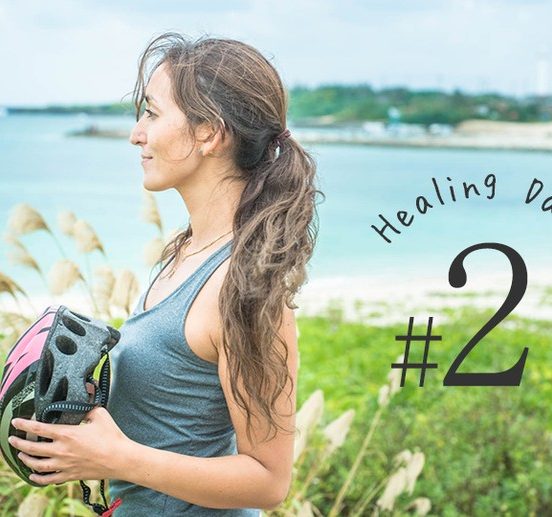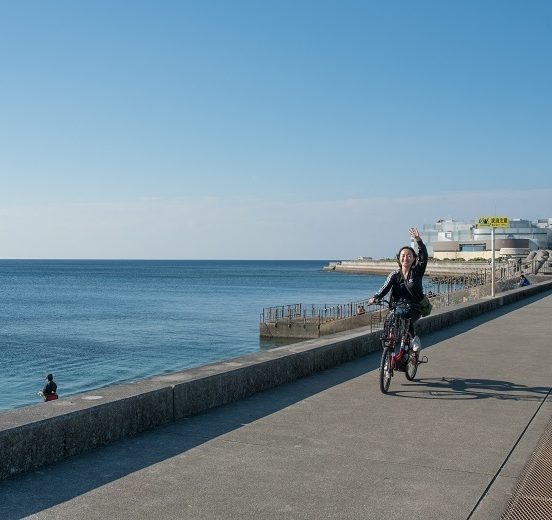Enjoy Pottering Around! Okinawa x Cycling
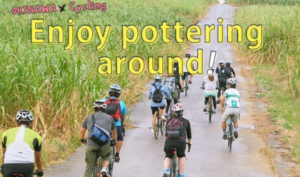
COURSE A: The Concentrated attraction of the island! Garcinia trees and sugarcane fields
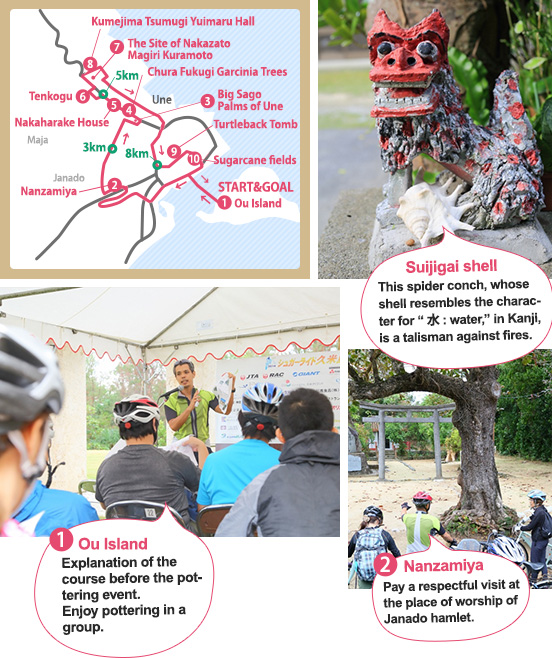

On this varied course, you pass through quiet, historic hamlets with rows of Garcinia trees in the eastern part of Kume Island and roll through fields of sugarcane. The tour commences at Ojima Island, after crossing Ou Bridge we reach our first destination, Janado hamlet. Around Nanzamiya, we see where prayers are made for a bumper crop, and nearby are large tropical almond trees standing like guardian deities.
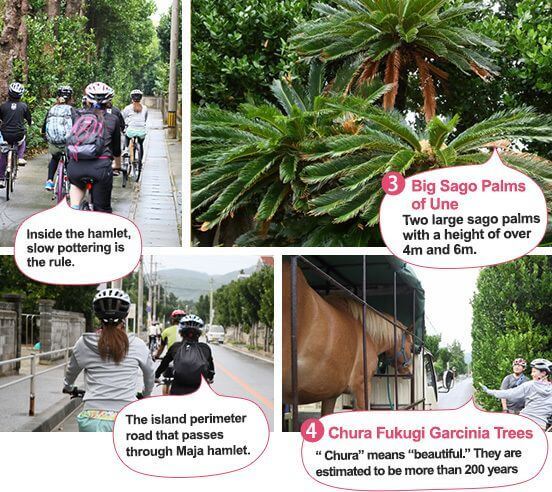
After passing through expansive fields of sugarcane, you come to Une hamlet. At Kikumurake House, a private home, you can see the two big sago palms of Une, said to be between 250 and 350 years old.
Cars pass by only occasionally, so riding is easy on the wide road that goes around the perimeter of the island, but it is worth the detour to enter the grid-like streets of Maja hamlet.
Garcinia trees offer protection from wind and fire, forming a hedge as if watching over the traditional red-tiled houses.
The most celebrated of the Garcinia tree villages is Chura Fukugi. A line of trees extends for 40 meters in the middle of the road. Here, part of the woods surrounding the residences have been preserved and used as a median strip after a road-expansion project.
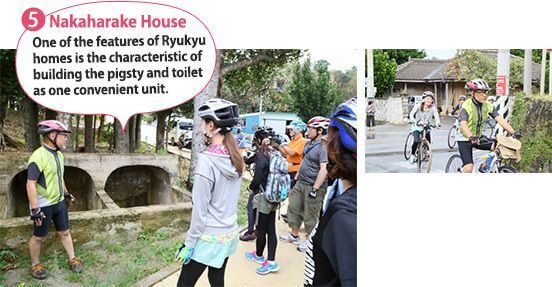
You can drop into the Nakaharake House, it is an old-fashioned house that has a combined pigsty-toilet, and you also visit Tenkogu, where people honor the gods so they will grant safe boat navigation, and other sites while wending your way through the rows of Garcinia trees.
A city hall once occupied the site of the former Nakazato Magiri Kuramoto in the Ryukyu Kingdom era. Now, only the coral limestone walls remain. If you travel by car, the culture of the island is invisible as it flashes past. The great part about pottering is that you will be able to encounter the culture of the island in detail.
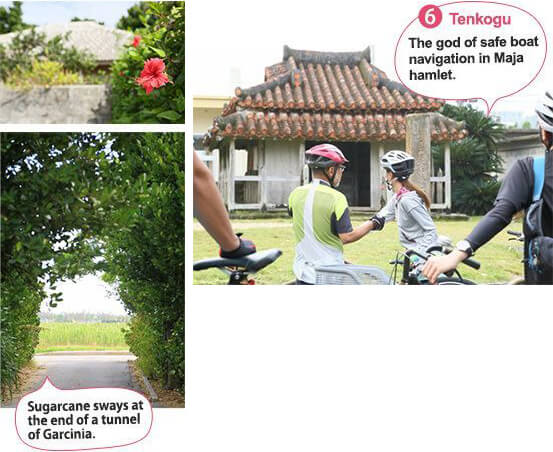
Maja hamlet is also the home of Kume Island Tsumugi textiles, where the clatter of looms can be heard. At Kumejima Tsumugi-no-Sato Yuimaru Hall, you can watch the processes of weaving and dyeing Kumejima Tsumugi fabric, a nationally-designated Important Intangible Cultural Property.
If you potter around the hamlets, you may encounter women diligently dyeing yarn for Kumejima Tsumugi. This is generally a flat course, but on the way back, you can whiz along the straight road down through the sugarcane fields and back to Ou Island.
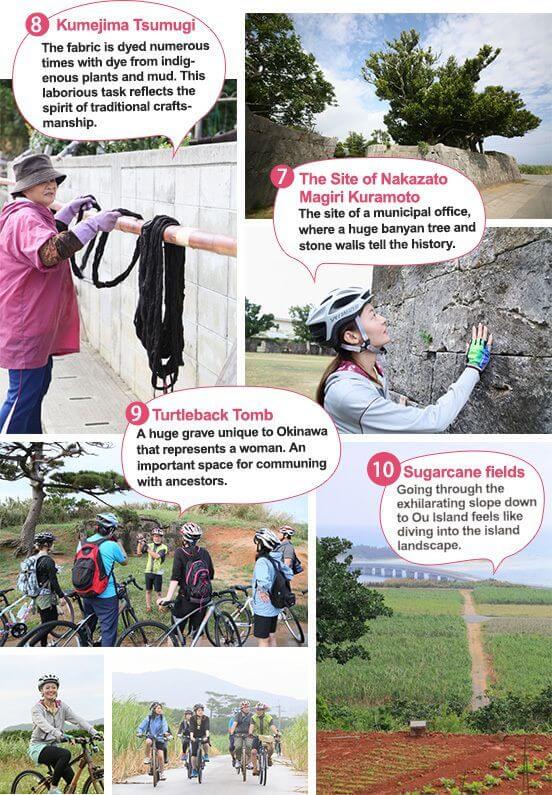
Renting a bicycle on Kume Island
- RESORT HOTEL Kume ISLAND (Magari) / Tel. 098-985-8001
- EEF BEACH HOTEL (Janado) / Tel. 098-985-7111
- CYPRESS RESORT KUMEJIMA (Ohara) / Tel. 098-985-3700
- Home Center Yoshinaga / DIY Shop (Higa) / Tel. 098-985-8869
COURSE B: Non-stop breathtaking scenery one after another! Spiritual journey through southern Okinawa
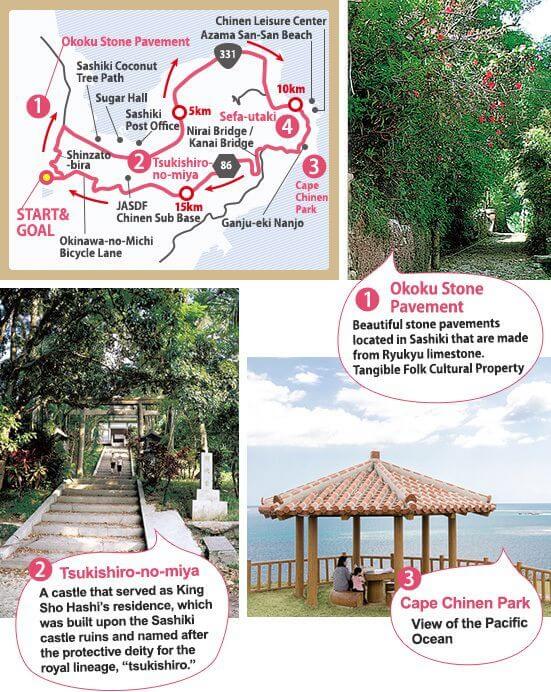
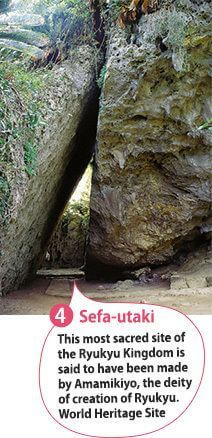
Tour the Chinen Peninsula on the east side of southern Okinawa Main Island. Cycle through the land deeply connected with Sho Hashi, who unified the Ryukyu Kingdom.
This is the well-known course of the popular Sho Hashi Half Marathon. The 1.2km slope with a height difference of 150 meters, known as Shinzato-bira, is considered a difficult part of the run, but for this pottering course, the hotel on the hill is your base, and you start by running down the slope. Sashiki Coconut Tree Path Street on Route 331 is completely flat, and you can enjoy the tropical mood as you move along easily. There are also little-known sightseeing spots nearby.
As you approach Chinen, there are power spots such as Sefa-utaki, a sacred and historical site, and here you can experience a deep and solemn atmosphere.
The greatest attraction of this course is the tranquil scenery of the fields and the beautiful views of the sea. Superb views that will have you gasping with awe, appear one after the other — such as the Nirai and Kanai Bridges in the shape of a hairpin-like curve against a backdrop of the ocean, Cape Chinen Park which makes an ideal resting point, and gives a great view over Nakagusuku Bay from the Okinawa-no-Michi Cycle Path.
There are lots of cafés and restaurants dotted around the course where you can enjoy the special scenery of southern Okinawa as you take a break for some leisurely tea.



